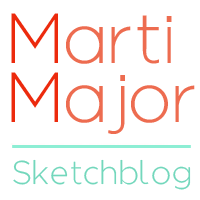The difference between this process, and the simplified process, was that I created every single object that would be a part of the final book and animation separately, much like the scenery and props for a stage set. The animator then took them according to storyboards I drew and arranged everything in Adobe After Effects. It's like it sounds--fairly tedious for everyone. After Peter Rabbit, I just storyboarded, and created the images as they would be seen in the final book with only the characters and objects that would move, or be in the foreground, separately. With so many objects made for Peter Rabbit, we reused as many as possible for the two other books as well.
Process for Peter Rabbit
First things first--general research. Knowing that Beatrix Potter created her illustrations from a conglomeration of actual locations, I went looking for the 'real' Mr. McGregor's garden since The Tale of Benjamin Bunny uses the same garden. (I didn't use it quite as strictly for The Flopsy Bunnies since Beatrix Potter based her illustrations for that book off other locations, in Wales, and Scotland I believe.)
Lingholm Estate, Keswick Lake District
The estate's garden, on the left side of the picture, was B. Potter's inspiration for the McGregor Garden. Found this image and the information from this article in The Sun.
Beatrix Potter's watercolor sketches from the Lingholm garden, from the Victoria & Albert Museum. According to The Sun article, she spent 9 summers at this estate. The greenhouse on the right is up against the far north-west wall of the garden, and you can still see it's there today in the aerial picture.
Before storyboarding, I made an aerial map of the garden based mostly off a Google satellite image and the aerial view of the estate above. I then planned out the storyboard, and the objects/elements that would be needed according to Peter's location during each particular scene. The map was important for the animator as well since he built the entire garden in After Effects.
Part of the rough storyboard.
Sketches for individual objects for the rabbit house. I did a lot of research to keep some of the particular objects, such as the beds and the garden tools, as historically accurate as possible. Same for the household objects and vegetable varieties so that they would be properly British.
The sketches were then scanned into Photoshop and made into the final color versions. The sketch in the image below was the 'map' for the rabbit house to show where everything was to go as the interior of the house was built by the animator.
Any objects that required more than a straight-on view had to be drawn with the front, and side views so that they would look complete once pulled into After Effects. Otherwise, the potting shed, for example, would only be viewable from the front if no correlating sides existed. To make sure these objects had some believability to them, I made sure to add in smaller details, such as the side of the roof eaves, the foundation, etc.
Garden and potting shed objects.
Three views of Peter's mother. All of the characters had at least a front and side view with all of their limbs and major joints on separate layers for animating. We tried to keep things as simple as possible, hence Mr. McGregor's floating head with the neutral expression which could be placed over his front view face like a mask.
Peter Rabbit, with and without shoes.
And there you have it! After everything was drawn out and finalized in Photoshop, the files were sent to the animator who did the rest. I personally enjoyed the simpler process we implemented after Peter Rabbit since I was able to fully compose and create the illustrations for each page.
If you would like to see the final Peter Rabbit, The Tale of Benjamin Bunny, or The Flopsy Bunnies, all three are available as free downloads for the iPad here, through myRead.com.
















No comments:
Post a Comment